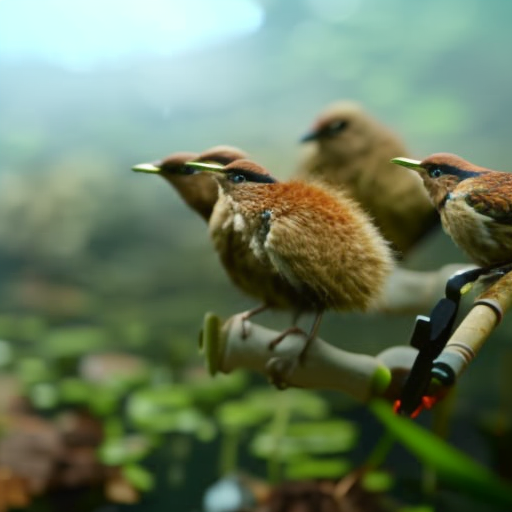
The Sixth Mass Extinction and Conservation Tools
The sixth mass extinction is currently happening on Earth. Rapid biodiversity loss is affecting every corner of the globe, as species of plants, mammals, fish, and reptiles disappear due to the changing climate. While much of the climate crisis and biodiversity loss looks grim, a group of researchers has recently highlighted some of the newest tools being used to address it.
Advances in Technology for Conservation
Scientists at the Georgia Institute of Technology and Max Planck Institute for Intelligent Systems in Stuttgart have published a perspectives piece on the different tools used throughout the world that are aiding in the conservation of wildlife and biodiversity. They highlight advances in technology, including both hardware and software, as well as frugal resources that are changing the way animals are protected. The research was published in the Journal of The Royal Society Interface in August.
“We are experiencing technological advancements of low-cost hardware, open-source software, machine learning, and more that can help with global conservation efforts,” said Andrew Schulz, postdoctoral researcher in the haptic intelligence department at Max Planck Institute and recent Ph.D. graduate from the George W. Woodruff School of Mechanical Engineering. “For researchers and people interested in learning about the ways conservation technology and tools are created, this piece serves as a starter guide to the field.”
Case Studies of Conservation Tools
In the article, the researchers presented five case studies of conservation tools, including open-source innovation, environmental DNA, computer vision, game theory and optimization, and frugal technology. Researchers also highlighted the importance of indigenous design in these conservation tool interventions and warned not to employ toxic practices, such as colonization of conservation or parasitic conservation. These practices take advantage of native lands, where conservationists refuse to work with local or indigenous populations and often do not cite or credit their help or expertise.
- AudioMoth: A device that allows low-cost access to bioacoustics research. It can track bird migrations, monitor aquatic environments, and assist with species identification and habitat restoration.
- Open-source innovation
- Environmental DNA
- Computer vision
- Game theory and optimization
- Frugal technology
Conservation Efforts at Georgia Tech
At Georgia Tech, conservation tools are constantly being built and implemented. The Tech4Wildlife student organization is working to implement conservation tech solutions, including a rabies dispenser for campus foxes, bird monitors in the EcoCommons, and forage feeders for Zoo Atlanta’s gorillas.
“I’m proud to see Cassie, Ben, and Andrew collaborating across fields and institutions to move conservation technology forward, and it inspires me about the future of conservation science,” said William Ratcliff, associate professor in the School of Biological Sciences and director of the quantitative biosciences program.
Citation
Conservation tools: the next generation of engineering–biology collaborations by Andrew K. Schulz, Cassie Shriver, Suzanne Stathatos, and Benjamin Seleb et. al. Published in the Journal of The Royal Society Interface, Volume 20, Issue 205, on 16 August 2023. DOI: 10.1098/rsif.2023.0232
SDGs, Targets, and Indicators
-
SDGs Addressed or Connected to the Issues
- SDG 13: Climate Action
- SDG 15: Life on Land
-
Specific Targets Based on the Article’s Content
- SDG 13.2: Integrate climate change measures into national policies, strategies, and planning.
- SDG 15.5: Take urgent and significant action to reduce the degradation of natural habitats.
-
Indicators Mentioned or Implied in the Article
- Use of low-cost hardware and open-source software for conservation efforts.
- Advances in machine learning and artificial intelligence for wildlife and biodiversity conservation.
- Implementation of frugal technology to protect species and habitats.
- Utilization of indigenous design and collaboration with local populations for effective conservation interventions.
- Monitoring biodiversity through devices like AudioMoth for species identification and habitat restoration.
Table: SDGs, Targets, and Indicators
| SDGs | Targets | Indicators |
|---|---|---|
| SDG 13: Climate Action | 13.2: Integrate climate change measures into national policies, strategies, and planning. | – Use of low-cost hardware and open-source software for conservation efforts. – Advances in machine learning and artificial intelligence for wildlife and biodiversity conservation. |
| SDG 15: Life on Land | 15.5: Take urgent and significant action to reduce the degradation of natural habitats. | – Implementation of frugal technology to protect species and habitats. – Utilization of indigenous design and collaboration with local populations for effective conservation interventions. – Monitoring biodiversity through devices like AudioMoth for species identification and habitat restoration. |
Behold! This splendid article springs forth from the wellspring of knowledge, shaped by a wondrous proprietary AI technology that delved into a vast ocean of data, illuminating the path towards the Sustainable Development Goals. Remember that all rights are reserved by SDG Investors LLC, empowering us to champion progress together.
Source: gatech.edu

Join us, as fellow seekers of change, on a transformative journey at https://sdgtalks.ai/welcome, where you can become a member and actively contribute to shaping a brighter future.






